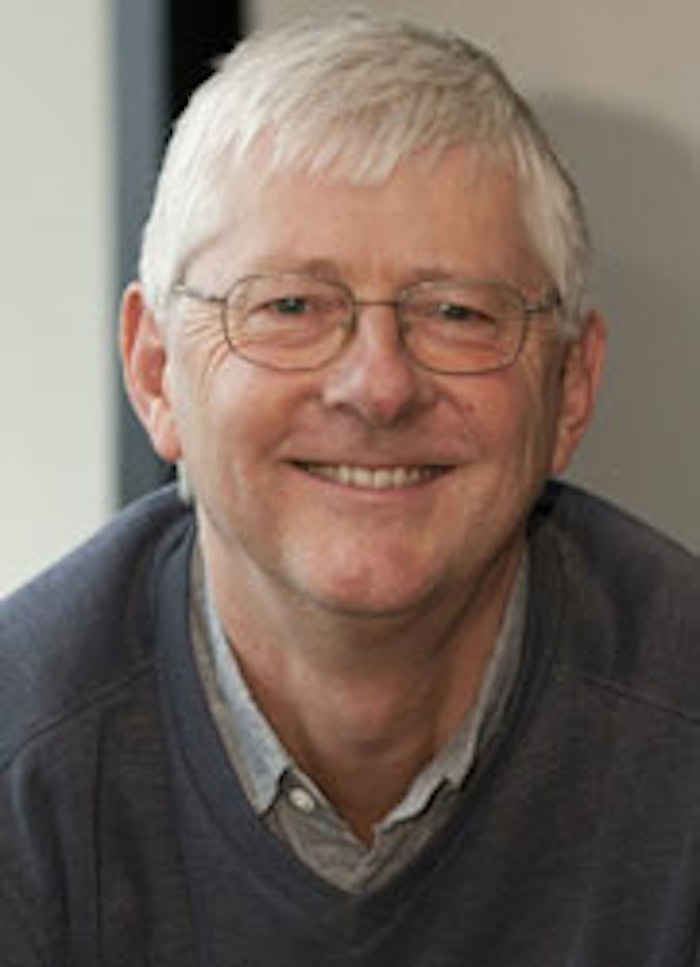
Although hair is technically dead, the hair care industry is alive and well thanks to the skill sets driving hair care brands—and no one knows this better than Robert Hefford, PhD. Although he has formulated in other categories, Hefford is a true hair care expert, having conducted basic research, formulating, testing, package design, scale-up and more for some of the industry’s top brands. Here, he recounts some of his experiences over the past three decades.
C&T: How did you first learn about cosmetic science?
I started in basic science at Unilever, where I investigated how to prevent things from sticking to surfaces, such as bacteria from sticking to teeth. In those days, Unilever had an academic environment, and I was lucky to start there. I gradually moved into applied science with hair care and later into product development. It just sort of happened, really.
C&T: What was one of the first products on which you worked?
The first product I ever opened up to look at was Head & Shoulders. I was researching deposition of zinc pyrithione on hair to formulate anti-dandruff and 2-in-1 shampoos, which Unilever discovered, so it had been researching the deposition of complex polymer coacervates on hair. That was something Bob Lochhead started.
C&T: What has been one of your toughest transitions in personal care?
Getting used to working on scale-up from the lab into the production facility was a big challenge. In the Clairol factory, a pump at the bottom of a tank had given way and one foot of 35% hydrogen peroxide in this bund was bubbling like crazy over the manhole covers. I said, “Don’t smoke near it. Wait.” It was bubbling as it decomposed to oxygen and water, which was catalyzed by the iron in the manhole covers, but if you wait long enough, it just turns to water.
C&T: What was one of your biggest surprises in personal care?
The Herbal Essences brand of shampoos and conditioners became too successful too quickly. Before the relaunch of the brand, Clairol had closed the factory in California where all the shampoos and conditioners were made. No one ever expected it to succeed; but it had a good formula, great packaging by Joe Periera, a wonderful fragrance and the When Harry Met Sally commercial in the shower. When the product reached Wal-Mart, [there was such a large demand for it] we could not fulfill it in Stamford and had to go to third parties for manufacturing. I was told that every bottle sold made by the third party lost the company money.
C&T: What have been some of your biggest accomplishments?
Coming off of the success of the Herbal Essences brand, Clairol wanted to launch a hair color. It had done the basic formulations in the United States but we had to create a manufacturing line in Cramlington, England, to make that product. At the time, I was responsible for the whole production, including the packaging, which was very hard.
C&T: What was so difficult about the packaging?
For the hair color, we had to develop a bottle that proved to be stable with the developer. Also, if the cap was too big on the colorant bottle, it caused the neck to stress crack. There were always little problems, and it was difficult to get them done in time. When I started, I thought the formula was the hardest piece but after managing the packaging group for about three years, I realized that packing is harder. In a formula, you might get one or two things wrong and no one will notice, but if you get something wrong in the packaging, it is usually very noticeable, particularly with hair color. Hair color [will test] your packaging seriously, with a pH 10 colorant, dyes that will go through virtually anything, a developer at a pH of 3, etc.
C&T: What products do you find the most difficult to formulate and why?
Hair color is the most difficult to formulate because there is a perception of what the hair color will look like. [A formulator] may think he has a light ash brown, but the person who is approving the color might not think it is right. The person in charge of that hair color must work closely with the people in testing, and ultimately the hairstylists, to learn how they see it. There may be 20 versions of a color before the person approving it is satisfied. There is a lot of subtlety in the tonality of hair color, and it is difficult getting that right.
C&T: What do you see as the future of personal care?
The cosmetic industry is going natural, whatever that means. There are many interesting ingredients coming out of the natural world, such as those replacing petroleum-derived materials. If someone comes around and says he wants a natural formula, [the formulator] has to establish exactly what he means. I tell him to make two lists: materials he does not want to use and materials he wants to use. You’ve got to try to establish what you are trying to develop before you start. If you want to get to an end point quickly, this is important—and it often involves forcing someone to make decisions.










